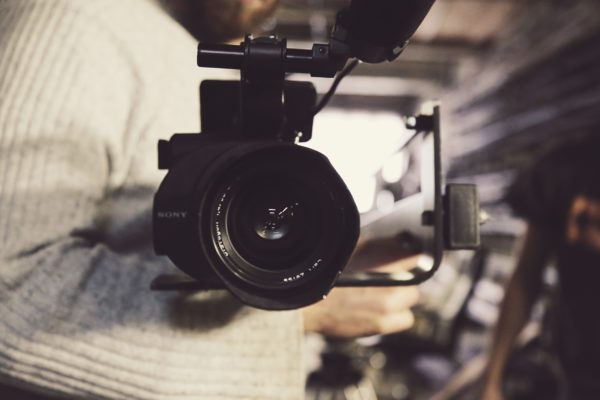
“The best way to tell stories in this world — where so much information is coming at us — actually is video. It commands so much information in a much quicker period so actually the trend helps us digest more of the information in a quicker way.”
Mendelsohn’s view presents an oddly constricted view of storytelling. “The best way” of telling a story might be through a video, or it might be through a song. It might even be through an old sequence of visual symbols we call letters and words.
The giant marshmallow floating in Long Island Sound
For example, let’s discuss the ominous 550-foot marshmallow that the Coast Guard discovered floating in Long Island Sound yesterday. This marshmallow doesn’t exist, of course — it’s a figment of my imagination that took me 5 seconds to think up and another 5 seconds to render in text. It’s not much of a “story” but it has all the elements: a “who” (Coast Guard), a “what” (marshmallow floating), a “where” (Long Island Sound), a “when” (yesterday), and a big unanswered “why.” It might be ridiculous and flaky: but structurally, it’s damned efficient.
Imagine trying to tell this story via video. You’d need models, props, CGI layers, real-life marshmallows, a ponderous narrator, and perhaps even a rented Coast Guard helicopter. You’d have to edit it, upload it, caption it, and then promote it – via Facebook’s trusty Boost Post mechanism. The resultant work might work as a video story or it might fail. But it would certainly take a lot more work, time and trouble.
Which means that in this case, video is probably the worst – most inefficient — way to tell such a “story.”
We can’t all be Andy Warhol
Also, I have to wonder whether Mendelsohn knows that “video” production often entails more than simply pointing a camera at yourself while wearing a funny mask. Videos — unless you’re Jean Luc Godard – involve a script, written dialogue, and structure: which are all heavily dependent on text. You can’t simply point your camera at something and expect it to become a “story” (unless you’re Andy Warhol).
There’s another big problem with Mendelsohn’s all-video vision of the future, and it’s a big one: people like text. In fact, according to a new survey of news consumers from the Reuters Institute for the Study of Journalism, “three-quarters of respondents (78%) say they still mostly rely on text. When pressed, the main reasons people give for not using more video are that they find reading news quicker and more convenient (41%) and the annoyance of pre-roll advertisements (35%).”
You can’t really blame Mendelsohn for making the blanket, simplistic, reductionist statement she made about storytelling. She works for Facebook, and Facebook is making tons of money from video ads. She’s promoting her product, which is her job. And she might even be right that by 2021 Facebook will be an all-video network. That’s fine. But if she intends to be taken seriously as a forecaster of the future of communication, she should choose her words more carefully.
Maybe she could clear all of this up with a quick Facebook Live video… but I doubt it.
- 10 Mistakes to Avoid When Using QR Codes for Marketing - September 20, 2023
- Kevin Lee on How AI Changes the SEO Landscape - August 31, 2023
- The Power of Compound Marketing: Kevin Lee Presents @ 1MediaWorld 2023 Global Conference - March 7, 2023
